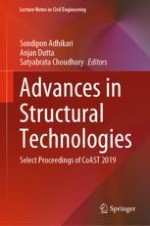2021 | OriginalPaper | Buchkapitel
Experimental and Analytical Investigations on Two-Way Flexural Capacity of Biaxial Voided Slab
verfasst von : R. Sagadevan, B. N. Rao
Erschienen in: Advances in Structural Technologies
Verlag: Springer Singapore
Aktivieren Sie unsere intelligente Suche, um passende Fachinhalte oder Patente zu finden.
Wählen Sie Textabschnitte aus um mit Künstlicher Intelligenz passenden Patente zu finden. powered by
Markieren Sie Textabschnitte, um KI-gestützt weitere passende Inhalte zu finden. powered by
